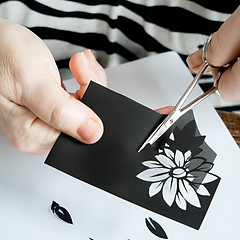Tin casters make their own alloys consisting of pure tin supplemented with antimony and / or copper. To be able to pour tin, so-called molds are needed. These can be made from cast sand, bronze, aluminum, iron or heat-resistant rubbers / silicones. The tin caster is able to make his own molds. Depending on the end product to be made, the parts are cast in one or more parts. The various parts are then put together with a gas flame and soldering wire, after which the end product is polished.
The tin casters who are part of Tingieterij Holland have dedicated their lives to the craft and follow developments closely. They enjoy showing the craft to the public, but also transferring their knowledge by letting people do it themselves. In this way they want to pass on the craft to future generations.
Tin products have always played a major role in daily life. Before earthenware became available as a mass product, people ate from pewter plates for a long time and drank from pewter cups. Due to the low melting temperature of tin at 231.9 ° Celsius, it is easy to process and reuse. From the 60s onwards, miniatures are made that serve as decorative items.



